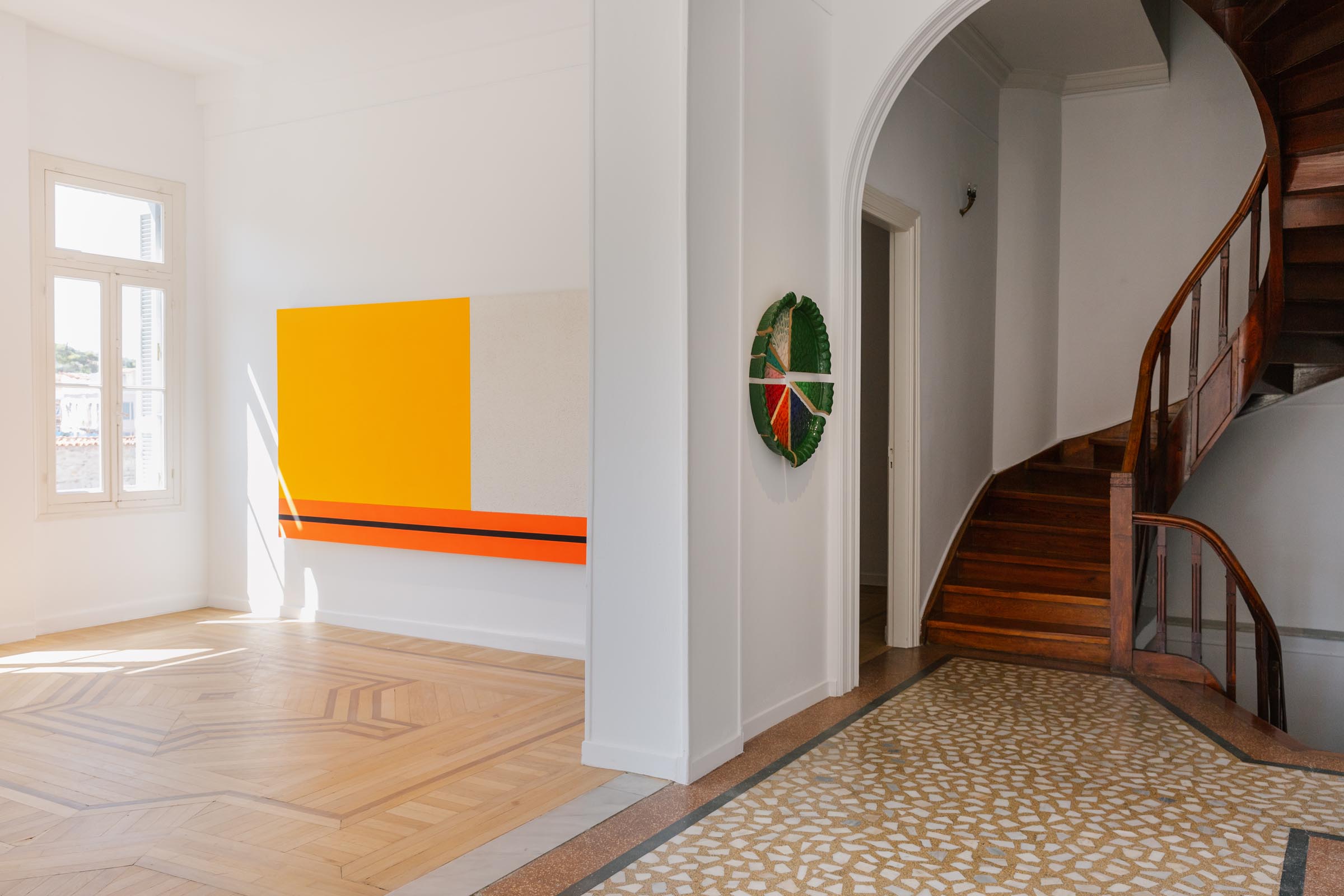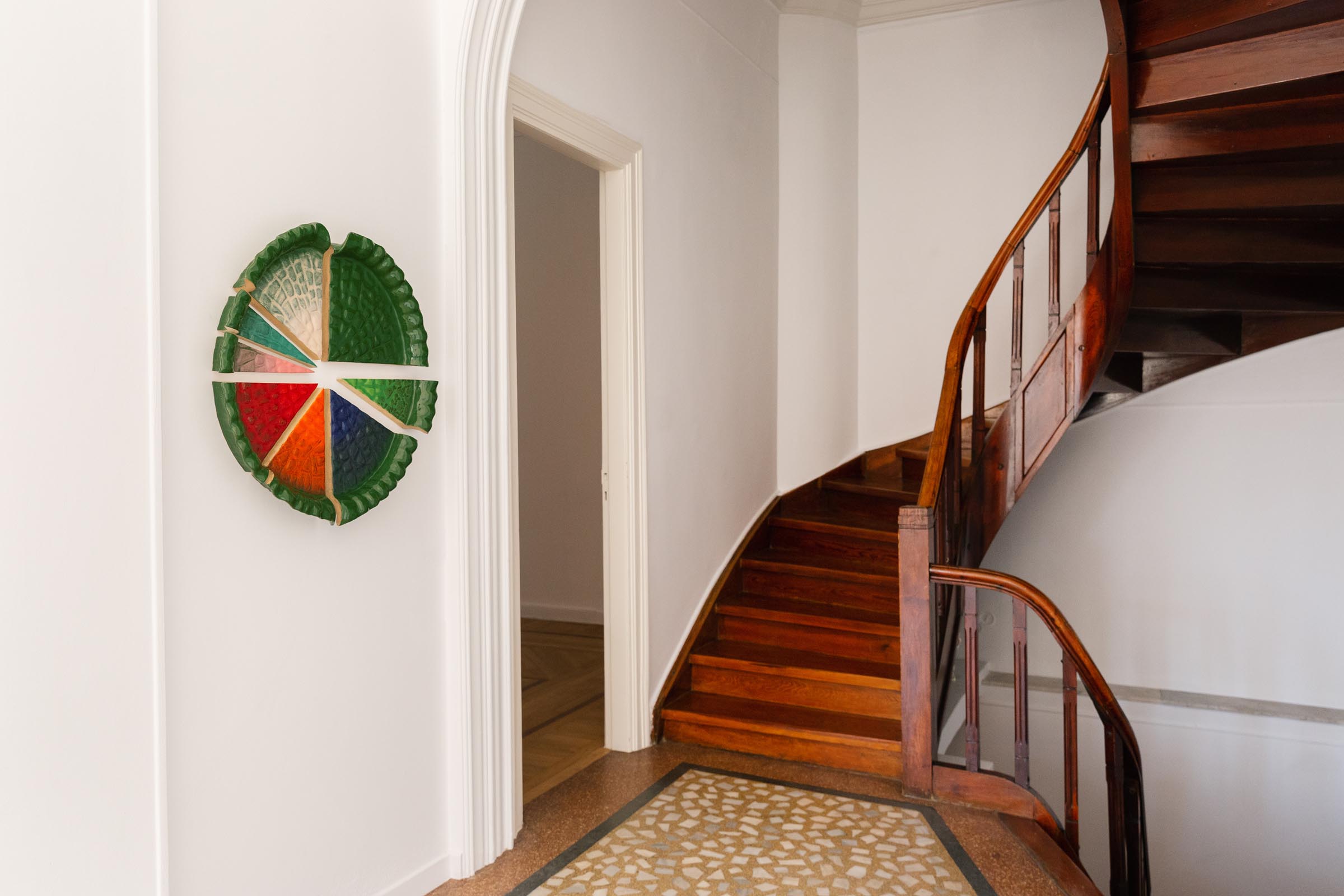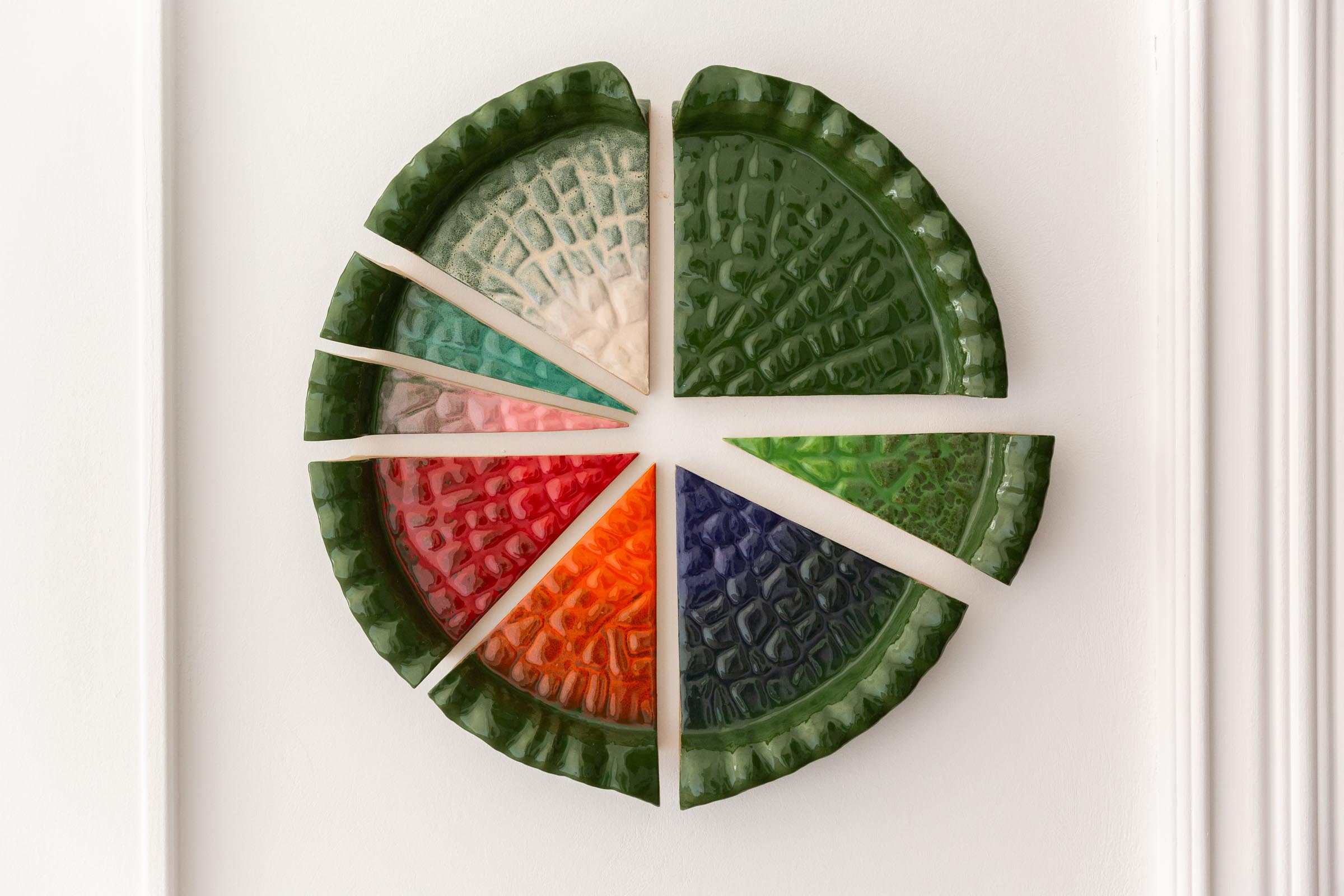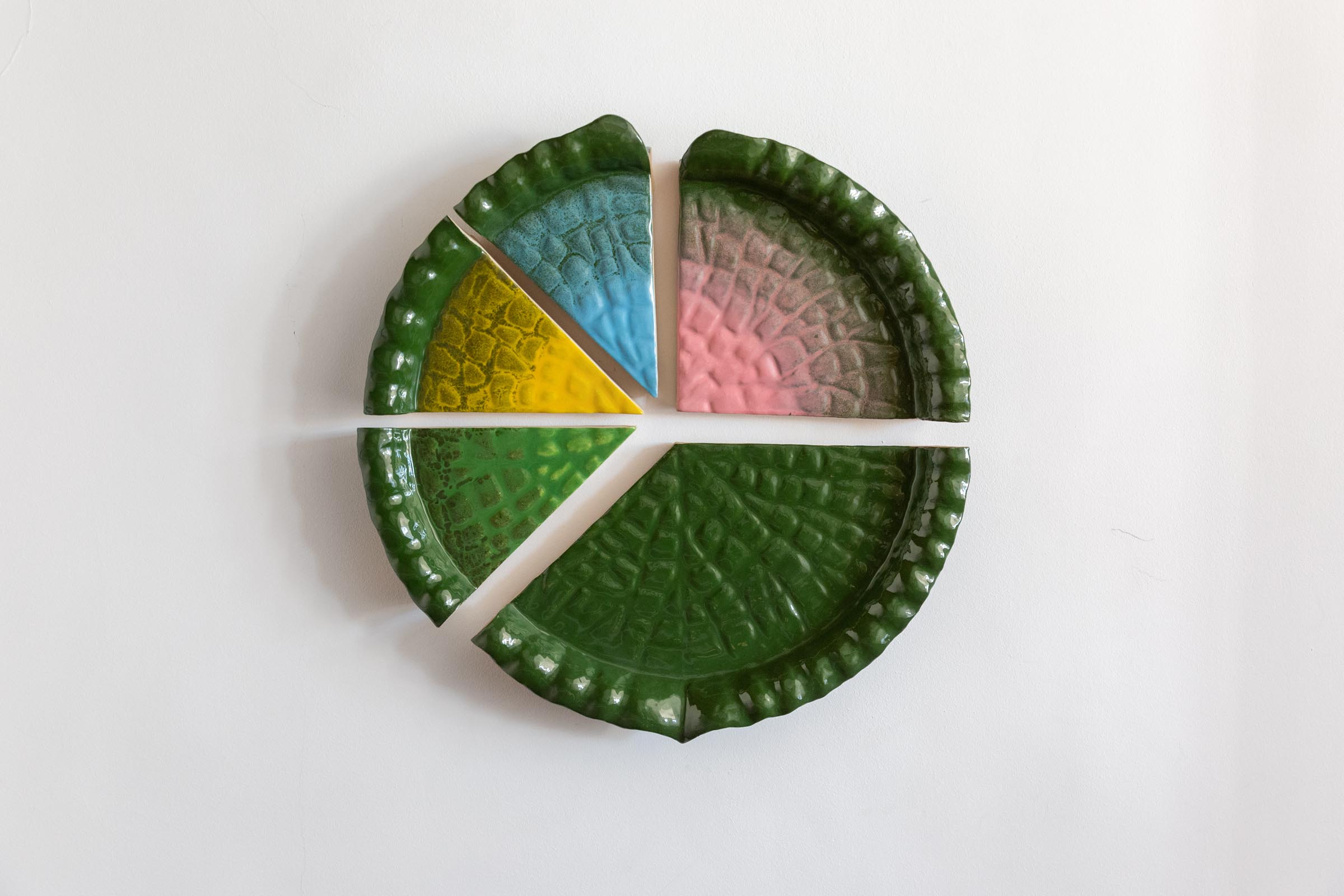CLOSE
2024
Layr, Vienna, Austria (forthcoming)
2023
15.12.2023 – 07.04.2024
Your and your vim
Aspen Art Museum
Colorado, USA
Your and your vim
Aspen Art Museum
Colorado, USA
02.09.2023-07.01.2024
Good Year
MARTa Museum Herford
Herford, Germany
Good Year
MARTa Museum Herford
Herford, Germany
03.05-14.06.2023
Nature wills it
The Ranch
Montauk, New York
Nature wills it
The Ranch
Montauk, New York
04.11-10.12.2022
Apple Red Cranberry House
Bortolami
New York
Apple Red Cranberry House
Bortolami
New York
27.08-11.12.2022
Forest Through The Trees
Laumeier Sculpture Park
St. Louis, Missouri
Forest Through The Trees
Laumeier Sculpture Park
St. Louis, Missouri
2022
30.04-30.07.2022
Auf dem Asphalt botanisieren gehen
Klosterfelde Edition
Berlin
Auf dem Asphalt botanisieren gehen
Klosterfelde Edition
Berlin
30.04-11.06.2022
Looking Through the Threshold
carlier gebauer
Berlin
Looking Through the Threshold
carlier gebauer
Berlin
17.02-28.10.2022
ALDO ROSSI’S SLEEPING ELEPHANT
Belvedere
Vienna, Austria
ALDO ROSSI’S SLEEPING ELEPHANT
Belvedere
Vienna, Austria
2021
26.10.2021–29.01.2022
Lives of an Object
ARCH
Athens, Greece
Lives of an Object
ARCH
Athens, Greece
12.06.-17.10.2021
Lichtenfels Sculpture
Austria
Lichtenfels Sculpture
Austria
28.04.-20.06.2021
I Think I Look More like the Chrysler Building
Vleeshal
Middelburg
I Think I Look More like the Chrysler Building
Vleeshal
Middelburg
27.03.2021-28.03.2021
Friend of a Friend
Warsaw
Poland
Friend of a Friend
Warsaw
Poland
2020
09.12.2020-30.01.2021
Babysteps into Masochism
Emanuel Layr
Vienna, Austria
Babysteps into Masochism
Emanuel Layr
Vienna, Austria
10.09.2020-07.11.2020
Fate of a cell / Η Τύχη ενός Κυττάρου
Martinos
Athens
Fate of a cell / Η Τύχη ενός Κυττάρου
Martinos
Athens
19.09.2020-31.10.2020
Ice to Gas
Pedro Cera
Lisbon
Ice to Gas
Pedro Cera
Lisbon
11.09.2020-17.19.2020
Various Others
Sperling, München
Munich, Germany
Various Others
Sperling, München
Munich, Germany
09.11.2019-08.03.2020
R.M.M. Rockefeller Center
Rockefeller Center
New York, NY
R.M.M. Rockefeller Center
Rockefeller Center
New York, NY
09.11.2019-08.03.2020
L’homme qui marche
Kunsthalle Bielefeld
Bielefeld, Germany
L’homme qui marche
Kunsthalle Bielefeld
Bielefeld, Germany
2019
27.09.2019―26.01.2020
My Fetish Years
Museum für Gegenwartskunst
Siegen, Germany
My Fetish Years
Museum für Gegenwartskunst
Siegen, Germany
11.01.―16.02.2019
Germanic Artifacts
Bortolami
New York, USA
Germanic Artifacts
Bortolami
New York, USA
2018
13.10.―22.12.2018
Positioner
Matthew Marks
Los Angeles, USA
Positioner
Matthew Marks
Los Angeles, USA
15.05.―21.07.2018
THEMOVE
Emanuel Layr Gallery
Vienna, Austria
THEMOVE
Emanuel Layr Gallery
Vienna, Austria
03.03.―13.05.2018
An Idea of Late German Sculpture; To The People Of New York, 2018
Kunsthalle Zürich
Zürich, Switzerland
An Idea of Late German Sculpture; To The People Of New York, 2018
Kunsthalle Zürich
Zürich, Switzerland
09.03.―22.07.2018
Between The Waters
Whitney Museum of Art
New York, USA
Between The Waters
Whitney Museum of Art
New York, USA
17.03.―28.04.2018
Embrassade
Fons Welters
Amsterdam, Netherlands
Embrassade
Fons Welters
Amsterdam, Netherlands
2017
19.01.―08.04.2017
Year Of The Monkey
Galerie Emanuel Layr
Rome, Italy
Year Of The Monkey
Galerie Emanuel Layr
Rome, Italy
28.04.―30.07.2017
SCHREI MICH NICHT AN, KRIEGER!
Schirn Kunsthalle
Frankfurt, Germany
SCHREI MICH NICHT AN, KRIEGER!
Schirn Kunsthalle
Frankfurt, Germany
09.04.―30.05.2017
Vertical Gardens
Antenna Space
Shanghai, China
Vertical Gardens
Antenna Space
Shanghai, China
03.06.―03.09.2017
Die Kommenden
Sprengel Museum
Hannover, Germany
Die Kommenden
Sprengel Museum
Hannover, Germany
14.09.―25.10.2017
in awe
Kunsthalle Exnergasse
Vienna, Austria
in awe
Kunsthalle Exnergasse
Vienna, Austria
06.2017
Art Basel Parcours
Art Basel
Basel, Switzerland
Art Basel Parcours
Art Basel
Basel, Switzerland
2016
07.06.―11.09.2016
Outrageous Acts and Everyday Rebellions
Kaufmann Repetto
Milan, Italy
Outrageous Acts and Everyday Rebellions
Kaufmann Repetto
Milan, Italy
28.01.―27.02.2016
RUN, RUN, RUNWAY
Golsa
Oslo, Norway
RUN, RUN, RUNWAY
Golsa
Oslo, Norway
27.02.―26.03.2016
Heartbreak Highway
Real Fine Arts
New York, USA
Heartbreak Highway
Real Fine Arts
New York, USA
17.06.―27.08.2016
My History of Flow
S.A.L.T.S.
Basel, Switzerland
My History of Flow
S.A.L.T.S.
Basel, Switzerland
04.07.―16.09.2016
fat center trash land 1―7, 2016
Small scale Sculpture triennial Fellbach
Fellbach, Germany
fat center trash land 1―7, 2016
Small scale Sculpture triennial Fellbach
Fellbach, Germany
09.09.―05.11.2016
Fieber
Emanuel Layr Gallery
Wien, Austria
Fieber
Emanuel Layr Gallery
Wien, Austria
04.07.―16.09.2016
In Bed with M/L Artspace
9th Berlin Biennale
Berlin, Germany
In Bed with M/L Artspace
9th Berlin Biennale
Berlin, Germany
03.12.2016―12.02.2017
Available Light
Kunstverein Braunschweig
Braunschweig, Germany
Available Light
Kunstverein Braunschweig
Braunschweig, Germany
2015
2015
Surrounding Audience
The New Museum Triennial
New York, USA
Surrounding Audience
The New Museum Triennial
New York, USA
09.2015
Emerging Artist Fellowship Exhibition
Queens
New York, USA
Emerging Artist Fellowship Exhibition
Queens
New York, USA
26.02.―04.04.2015
Looking at you (revived) again
Off Vendom
New York, USA
Looking at you (revived) again
Off Vendom
New York, USA
28-05.―16.05.2015
One step away from further Hell
Vilma Gold
London, UK
One step away from further Hell
Vilma Gold
London, UK
23.11.2015―08.01.2016
National Gallery 2―Empire Map
Chewday’s
London, UK
National Gallery 2―Empire Map
Chewday’s
London, UK
22.02.―05.04.2015
The problem today is not the other but the self
MINI/Goethe-Institut Ludlow 38
New York, USA
The problem today is not the other but the self
MINI/Goethe-Institut Ludlow 38
New York, USA
2014
09.05.2014-19.07.2014
Warm Math
Balice Hertling, New York
New York
Warm Math
Balice Hertling, New York
New York
05.2014
Frieze New York
Frieze Art Fair at Randall’s Island
New York, USA
Frieze New York
Frieze Art Fair at Randall’s Island
New York, USA
02.05.―07.06.2014
Bloomington: Mall Of America
Bortolami Gallery
New York, USA
Bloomington: Mall Of America
Bortolami Gallery
New York, USA
27.04.―01.06.2014
YES, I’M PREGNANT
Skulpturen museum Glaskasten
Marl, Germany
YES, I’M PREGNANT
Skulpturen museum Glaskasten
Marl, Germany
22.03.―17.05.2014
Geburt und Familie
White Flag Projects
Saint Louis, USA
Geburt und Familie
White Flag Projects
Saint Louis, USA
08.―09.2014
Piracanga Freedom?
Two Hotel, Piracanga Beach
Bahia, Brazil
Piracanga Freedom?
Two Hotel, Piracanga Beach
Bahia, Brazil
06.06.―14.08.2014
Chat Jet (Part 2), Sculpture in Reflection
Künstlerhaus KM
Austria
Chat Jet (Part 2), Sculpture in Reflection
Künstlerhaus KM
Austria
06.06.―03.08.2015
Revelry
Kunsthalle Bern
Bern, Switzerland
Revelry
Kunsthalle Bern
Bern, Switzerland
13.09.―18.10.2014
DIE
Parisa Kind
Frankfurt, Germany
DIE
Parisa Kind
Frankfurt, Germany
2013
14.12.2013-08.02.2014
Soft Wear
Sandy Brown
Berlin
Soft Wear
Sandy Brown
Berlin
24.02.―21.04.2013
From One Artist To Another
Kunstverein Wiesbaden
Germany
From One Artist To Another
Kunstverein Wiesbaden
Germany
13.09.―18.10.2013
On Thomas Bayrle
The Artist’s Institute
New York, USA
On Thomas Bayrle
The Artist’s Institute
New York, USA
05.2013
The Doors
Skulpturenpark Köln
Köln, Germany
The Doors
Skulpturenpark Köln
Köln, Germany
27.06.―09.08.2013
Freak Out
Greene Naftali Gallery
New York, USA
Freak Out
Greene Naftali Gallery
New York, USA
27.09.―09.11.2013
Love of Technology
Museum of Contemporary Art
North Miami, USA
Love of Technology
Museum of Contemporary Art
North Miami, USA
2012
05.02.2012-22.04.2012
Hang Harder
Neuer Aachener Kunstverein
Aachen, Germany
Hang Harder
Neuer Aachener Kunstverein
Aachen, Germany
12.2012
Lena Henke: First Faces, book launch at Karma Books, New York
Karma
New York, NY
Lena Henke: First Faces, book launch at Karma Books, New York
Karma
New York, NY
13.01.2012-19.02.2012
If I had eight hours to chop down a tree, I would spend six sharpening my axe
Kunstraum Riehen
Basel, Switzerland
If I had eight hours to chop down a tree, I would spend six sharpening my axe
Kunstraum Riehen
Basel, Switzerland
01.06.―29.07.2012
Core, Cut, Care
Oldenburger Kunstverein
Germany
Core, Cut, Care
Oldenburger Kunstverein
Germany
14.09.―21.10.2012
H․ H․ Bennett, Lena Henke and Cars
1857
Oslo, Norway
H․ H․ Bennett, Lena Henke and Cars
1857
Oslo, Norway
2011
15.06.―07.08.2011
Andrei Koschmieder puts
Real Fine Arts
New York, NY
Andrei Koschmieder puts
Real Fine Arts
New York, NY
23.04.―18.06.2011
Schlangen im Stall, “snakes in the barn”
Galerie Parisa Kind Frankfurt
Frankfurt am Main, Germany
Schlangen im Stall, “snakes in the barn”
Galerie Parisa Kind Frankfurt
Frankfurt am Main, Germany
2010
05.2010
WIR UEBER UNS
Neue Alte Bruecke Frankfurt
Frankfurt am Main, Germany
WIR UEBER UNS
Neue Alte Bruecke Frankfurt
Frankfurt am Main, Germany
08.2010
you have four eyes, (First ladies)
V 8
Karlsruhe, Germany
you have four eyes, (First ladies)
V 8
Karlsruhe, Germany
10.2010
Scandinavian blonde
Mousonturm
Frankfurt, Germany
Scandinavian blonde
Mousonturm
Frankfurt, Germany
28.11.2009 - 23.02.2010
Stone Temple Playground Collection
Kornhauschen Aschaffenburg
Aschaffenburg, Germany
Stone Temple Playground Collection
Kornhauschen Aschaffenburg
Aschaffenburg, Germany
28.11.2009 - 23.02.2010
Tokyo Hotel und deine Mutter
Literaturhaus
Frankfurt, Germany
Tokyo Hotel und deine Mutter
Literaturhaus
Frankfurt, Germany
Close
Close
10.09.2020-07.11.2020
Fate of a cell / Η Τύχη ενός Κυττάρου
Martinos
10.09.2020-07.11.2020
Fate of a cell / Η Τύχη ενός Κυττάρου
Martinos
Athens
Text by: Sotirios Kotoulas
The exhibition, Fate of a Cell, presents a body of works from 10 artists that articulate the various scales, qualities, and characteristics of cellular structures, systems thinking and human settlements. The theory of Ekistics authored by architect Constantinos Doxiadis (1913-1975), anchors the works in their collective quest to present new directions for human settlements based on human relationships to nature and technology. Cellular units are coded and programmed over time, with patterns of human growth activity across various social, natural and technological ecosystems. These ideas are questioned, referenced, and unpacked by artists: Aristide Antonas, Bia Davou, Lois Dodd, Peter Halley, Lena Henke, Charlotte Posenenske, Ettore Sottsass, Vivian Suter, Oscar Tuazon and Constantinos Doxiadis.
The etymologic origin of the word cell (Latin) is celare, to hide, conceal or cella, a small room. In the 12th century, cell was used to describe a small monastery and in the 14th century, a small room for a monk or a nun. By the 17th century organic biological forms are described as cells and scientific biological discoveries in the 19th century introduce terms like cell-division, cell membrane and cell-body to our lexicon. The microscope revealed invisible cellular structures of plants and animals; typically circular in form, containing a nucleus surrounded by a thin membrane. In 2020, the Covid pandemic revives the notion of the cell and the consequences of individual and collective action.
The circular diagram of the cell is a biological truth imbued with mythological and symbolic meaning. The circle is a universal symbol of totality and wholeness, infinity, with spatial and temporal limits. In nomadic cultures, dynamism and movement was symbolized by tents erected in a circular plan. Concentric circles symbolize solar and lunar domains across their phased cycles. The variables of time; past, present, and future are depicted as three concentric circles, interdependent of one another. From microscopic to cosmic scales, cellular cycles of growth and death are influenced by human interaction with nature. The traces of this cyclical growth are found in works of art and architecture.
Circular cellular forms, concentric circles and rings, lifted from nature, are often used to articulate order, unveil symbolic meaning, and propose a new form of architectural urbanism and growth. In order to reach a city of optimum size, Doxiadis proposed a science of human settlements titled Ekistics; that considers “the principles man takes into account when building his settlements, as well as the evolution of human settlements through history in terms of size and quality.” This comprehensive approach includes the entire range of settlements; from “primitive” to “developed,” broken down into a “complex system of five elements – nature, man, society, shells (that is buildings), and networks.” This new model for metropolitan growth responds to human dimensions as seen through the “economic, social, political, technological and cultural” layers. The tripartite system incorporates “natural, social and man-made elements” in an attempt to invent “general principles and laws” for urban growth that are an “extension of man’s biological characteristics.” In this science, the human condition confronts natural terrestrial and cosmic dimensions through the articulation of energy.
Doxiadis defines several principles that have shaped human settlements over time. The first principle involves maximizing human contact with the elements of nature. Our obsession with conquering and controlling nature via technologic and instrumental means, blind us from determining our optimal relationship with nature. We do not know when we have reached our optimal relative state because of the voracious appetite to dominate natural resources and energy. This domination is driven by the value of excess, and is not related to human needs and their impact on the health of our environment. If we are presented with the possibility to extract more energy, history shows we blindly extract more without calculating the negative impacts of pollution. The second principle discloses our tendency to expend the least amount of energy and effort as we determine the structures, forms, and routes of our physical world. The third principle determines our protective space from other people, animals, and objects by separation; to ensure we maintain our sensory and psychological comforts. The walls of a house, transportation routes, fortifications and barriers are physical manifestations of this third principle. The fourth principle designs a physiological and aesthetic ordering system to optimize our relationship to the environment; “nature, society, shells (buildings and houses of all sorts), and networks (ranging from roads to telecommunications).” This ordering system directly affects architecture and art. In the fifth principle, humans organize their settlements to optimize the previous four principles in present contexts and conditions to synthesize a “balance between man and his man-made environment.”
The key factor that directly affects the fate of a cell involves “the distance man wants to go or can go in the course of his daily life.” The individual makes up the primary unit. The secondary unit is the personal space that belongs to the individual, and this space can be shared. The third unit is the family home and the fourth unit is a group of homes; a collection of cells that form a society. The fifth unit encompasses all human settlements on planet Earth. The maximum personal walking distance in a day creates a transit radius from which to measure from. When one walks, one has access to more points of contact and transactional exchanges. As a city grows, the car greatly increases the transit radius and allows for rapid growth, migration, and class displacement, but ultimately reduces the points of contact. In ancient Athens, Perikles’ pedestrian route from home to the Assembly allowed him to meet approximately 100 to 150 people which gave him a consistent daily sample of public opinion. This path traveled provided many points of contact that contributed to his democratic duties as general of Athens. Thus, the design and form of units at varying scales presents an “extension of man in space (in terms of his physical dimensions and senses) and follows biological and structural laws.” Understanding the genesis of these forms - morphogenesis – allows us to identify patterns that can inform an empirical system of growth; a programmed (computed) synthesis of conditions from the human and natural domains. The emergence of new patterns and dynamic systems inform a feedback loop of new general principles and laws for cellular growth. This show grants us the opportunity to experience these concepts in the present qualitative and quantitative realm, freed from the limits of computational programming and empiricism. One navigates and measures the transformational forces of human settlement and nature through direct synesthetic experience. The symbiotic relationships override the limits of instrumental programming and express the full dimensions of sensual experience, offering a new apparatus for Ekistics.
*all quotes by Constantinos Doxiadis from Ekistics, the Science of Human Settlements, 1970.






